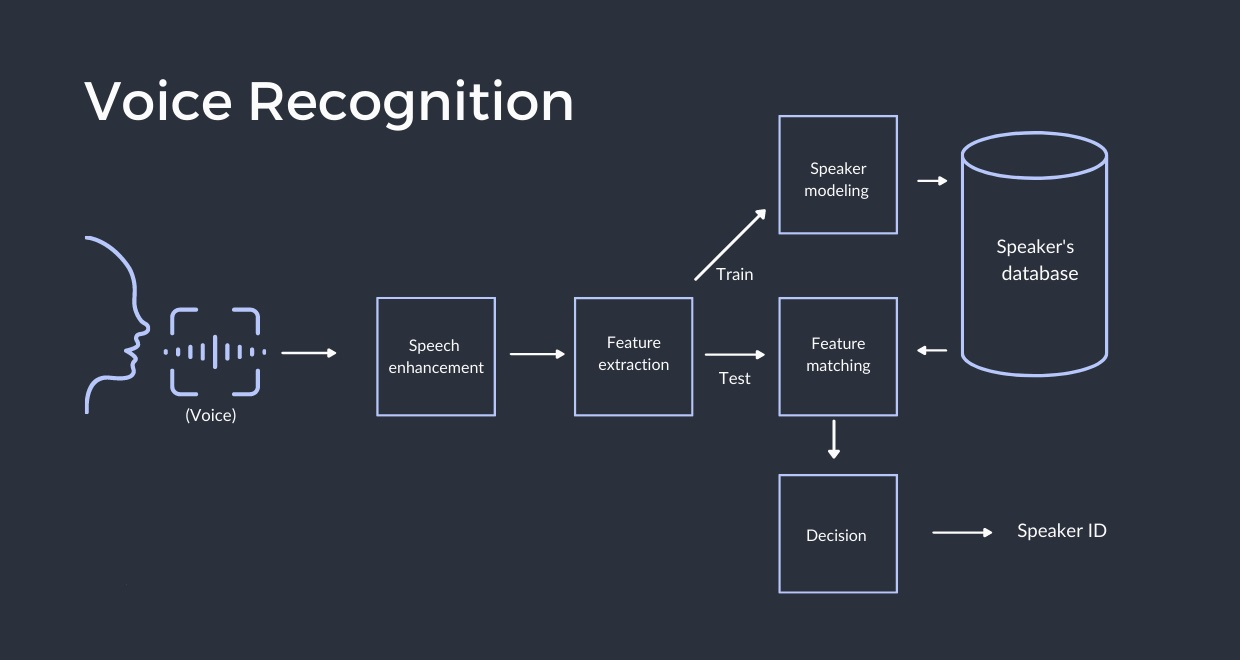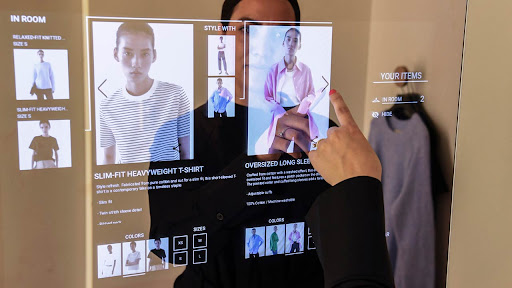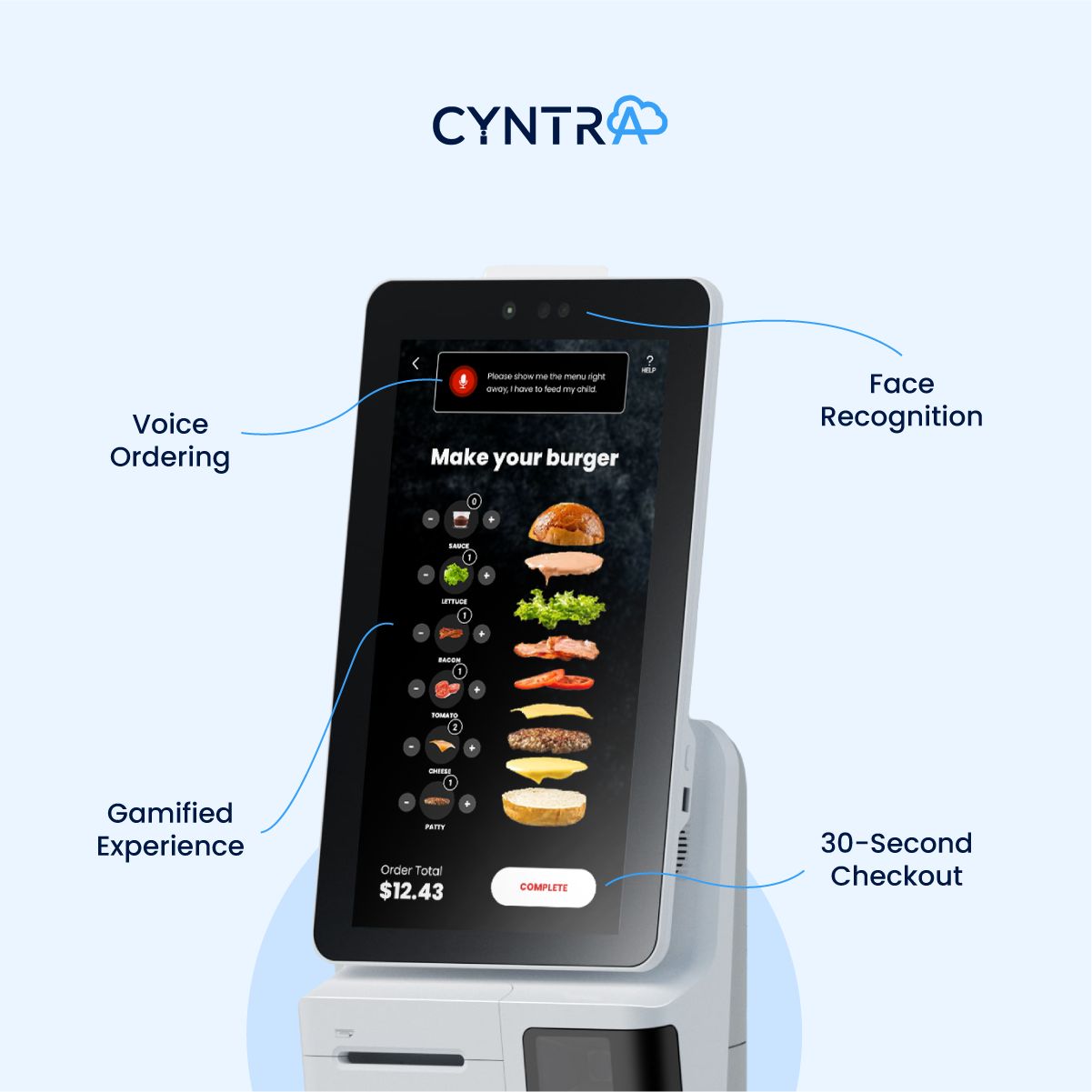In today's rapidly evolving technological landscape, Artificial Intelligence (AI) and Machine Learning (ML) have emerged as powerful tools with the potential to revolutionize various industries. AI/ML technologies offer remarkable capabilities in analyzing and understanding complex data, enabling tasks that were once in the realm of science fiction.
This blog explores the applications of AI/ML in audio and video recognition, its disruptive impact on the retail industry, how we at Cyntra have incorporated AI/ML solutions and also we will critically analyze the potential negative consequences that can arise from the rapid advancement of artificial intelligence, ensuring a balanced perspective on this transformative technology.
AI/ML in Audio and Video Recognition
Audio and video recognition technologies leverage AI/ML techniques to process and interpret audio and visual data, allowing machines to understand and derive meaningful insights from these inputs. With the advancements in deep learning and neural networks, AI/ML models can now analyze sound patterns, speech, and visual content with remarkable accuracy and efficiency. Here are some key applications:
Speech Recognition
AI/ML algorithms have greatly improved speech recognition systems. They can accurately transcribe spoken language into written text, enabling applications like voice assistants, transcription services, and voice-controlled systems. Deep learning techniques, such as recurrent neural networks (RNNs) and convolutional neural networks (CNNs), have enhanced the accuracy and robustness of speech recognition models.

Sound Classification
AI/ML models excel in classifying and categorizing different sounds. By training on large datasets, these models can identify specific sounds, such as musical instruments, environmental noises, or human vocal expressions. Sound classification finds applications in areas like audio surveillance, acoustic event detection, and emotion recognition, enabling systems to understand and respond to specific auditory cues.
Audio Content Analysis
AI/ML techniques enable comprehensive analysis of audio content. This includes tasks such as speaker diarization (identifying speakers in an audio stream), sentiment analysis (detecting emotions conveyed through voice), and semantic analysis (extracting meaning and context from audio). These capabilities have broad implications in industries like customer service, market research, and content recommendation systems.
Video Content Analysis
AI/ML has revolutionized video content analysis, enabling machines to understand and interpret visual information with remarkable accuracy. Here are three key aspects of AI/ML in video content analysis:
Object Recognition and Tracking: AI/ML algorithms can identify and track objects in video streams. By training deep learning models on extensive datasets, these algorithms learn to recognize and localize specific objects of interest, such as people, vehicles, or products. Object recognition and tracking have numerous applications, including video surveillance, autonomous vehicles, and retail analytics.
Activity Detection and Action Recognition: AI/ML models can analyze video content to detect and understand human activities. These algorithms can identify complex actions, such as walking, running, or even more specific activities like playing sports or cooking. Activity detection and action recognition have applications in areas like video surveillance, sports analytics, and healthcare monitoring.
Contextual Understanding and Video Recommendation: AI/ML techniques enable machines to understand the context of the visual scene depicted in a video. By analyzing visual elements, scene composition, and context cues, algorithms can extract meaningful insights. This enables applications like personalized video recommendations, content filtering, and targeted advertising, improving user experience and engagement.
AI/ML-based video content analysis relies on deep learning architectures such as convolutional neural networks (CNNs), recurrent neural networks (RNNs), and their variants. These models are trained on vast amounts of video data, enabling them to learn complex patterns and features. With the power of GPUs and advancements in parallel computing, real-time video analysis has become feasible, enabling applications that were previously challenging or impossible.
As AI/ML techniques continue to advance, video content analysis will play a crucial role in various industries, including security and surveillance, entertainment, healthcare, retail, and more. By unlocking insights from video data, AI/ML enables businesses and organizations to make informed decisions, improve efficiency, and enhance user experiences
AI/ML Disruption in the Retail Industry
The integration of AI/ML solutions has the potential to disrupt the retail industry in numerous ways. Let's explore some key areas:

Audio and Video Recognition
Retailers are experiencing a profound transformation in their operations and customer engagement, thanks to the advancements in AI/ML-powered audio and video recognition technologies. These innovative solutions, such as natural language processing (NLP), computer vision, and deep learning, have revolutionized the retail industry by empowering businesses to extract meaningful insights from audio and visual data. Consequently, retailers can now leverage these technologies to gain a competitive edge in the following ways:
Enhanced Customer Engagement
By leveraging AI/ML algorithms for speech recognition and sound classification, retailers can offer personalized and interactive experiences to customers. Voice-controlled systems, virtual assistants, and transcription services driven by accurate speech recognition improve customer engagement and satisfaction.
Improved Product Understanding
Advanced video content analysis enables retailers to extract valuable insights from visual data. This includes object recognition, activity detection, and contextual understanding. With this information, retailers can optimize merchandising strategies, enhance security surveillance, and provide personalized video recommendations to customers.
Gamified User Experience
Incorporating gamified user experiences is another disruptive element in the retail industry. By leveraging AI/ML algorithms, retailers can gamify user experiences and tailor them to individual customers. Gamification elements such as quizzes, challenges, and virtual rewards create a personalized and interactive environment, encouraging customer engagement, repeat visits, and brand loyalty.

Real-Time Feedback and Recommendations
AI/ML-driven gamified experiences allow retailers to provide real-time feedback, suggestions, and recommendations based on customer choices and preferences. This dynamic interaction helps customers make informed decisions, enhances their shopping journey, and boosts sales by offering tailored product recommendations.
Virtual Try-On and Augmented Reality
By incorporating AI/ML-based virtual try-on and augmented reality technologies, retailers can enable customers to visualize products in a virtual environment. This immersive experience bridges the gap between online and in-store shopping, increases confidence in purchase decisions, and reduces returns, leading to higher customer satisfaction and improved conversion rates.
By leveraging AI/ML solutions in audio and video recognition and incorporating gamified user experiences, retailers can disrupt the industry by delivering personalized, engaging, and immersive shopping experiences. These technologies empower retailers to gain a competitive advantage, enhance customer satisfaction, and drive business growth in the evolving retail landscape.
How we at Cyntra are incorporating AI/ML based solutions:
Let's take a closer look at how we at Cyntra are leveraging AI/ML solutions to enhance its products and services. By embracing AI/ML technologies, we have achieved notable improvements in several key areas:

Advanced Speech Recognition
Cyntra has implemented new age AI/ML models for speech recognition. These models utilize deep learning techniques to accurately transcribe spoken language into written text. This has improved the accuracy and efficiency of voice-controlled systems, voice assistants, and transcription services offered by the company. Customers can now interact seamlessly with voice-enabled devices and enjoy accurate and reliable speech-to-text conversion.
Enhanced Sound Classification
Cyntra has developed sophisticated AI/ML algorithms for sound classification. By training models on extensive datasets, the company can identify and categorize various sounds with high precision. This technology enables the detection of specific instruments, environmental noises, and even emotional expressions conveyed through voice. Such capabilities enhance the company's audio-based products and services, providing customers with immersive and tailored experiences.
Intelligent Video Content Analysis
Leveraging advanced AI/ML techniques, we at Cyntra have revolutionized its video content analysis capabilities. The company's AI-powered systems can now extract valuable insights from visual data, such as recognizing objects, detecting activities, and understanding contextual information. These advancements have empowered the company to provide enhanced security surveillance, robust object tracking, and personalized video recommendation systems to its customers.
In addition to improving audio and video recognition technology, Cyntra is at the forefront of incorporating gamified user experiences in its kiosks through the power of AI/ML. By combining these technologies, the company has created interactive and engaging interfaces that captivate customers and enhance their overall shopping experience.Personalized Gamification
Cyntra leverages AI/ML algorithms to analyze customer preferences, purchase history, and behavior patterns. Using this data, the kiosk system tailors gamified experiences for individual users. For example, a customer may be presented with interactive quizzes, challenges, or virtual rewards based on their interests or past purchases. This personalized gamification approach boosts customer engagement, encourages repeat visits, and fosters a sense of fun and excitement in the shopping process.
Real-time Feedback and Recommendations
AI/ML algorithms continuously monitor and analyze customer interactions with the kiosk. The system can provide real-time feedback, suggestions, and recommendations based on the customer's choices and preferences. For instance, if a customer is browsing through clothing options, the kiosk can offer personalized outfit recommendations or styling tips. This dynamic feedback loop enhances the customer's decision-making process and elevates their overall shopping journey.

Virtual Try-On and Augmented Reality
Cyntra is working on utilizing AI/ML-based virtual try-on and augmented reality (AR) technologies within its kiosks. Customers can virtually "try on" products such as apparel, accessories, or cosmetics using their own image or a simulated avatar. The AI/ML algorithms accurately map the customer's features and enable realistic visualization, allowing them to see how the products look and fit before making a purchase. This immersive and interactive experience can provide customers with a unique and convenient way to explore products.
Cyntra’s solution: “BREEZ"
By integrating tech solutions such Natural Language Processing (NLP), use of deep neural network techniques such as CNNs and RNNs, gamified user experiences powered by AI/ML and RFID technology, Cyntra has redefined the conventional retail kiosk concept. Our flagship product, Breez, specifically designed for the Fashion and Merchandise industry, has revolutionized the customer checkout experience. With Breez, customers can effortlessly complete their purchases within 30 seconds using the RFID-enabled tunnel connected to our self-service kiosk. This innovative solution eliminates the need for external assistance, ensuring a seamless and efficient checkout process.
The interactive and personalized elements create memorable interactions, foster customer loyalty, and differentiate the company from its competitors. Customers not only enjoy a more enjoyable shopping experience but also feel valued and engaged throughout their journey.
Ethical and Other Issues with AI/ML-Based Solutions
While AI/ML-based solutions offer significant benefits, it is essential to address the ethical and other challenges associated with their deployment. Here are some key considerations:
Data Bias
AI/ML models heavily rely on training data, and if the data is biased or unrepresentative, the models can inherit those biases, leading to unfair or discriminatory outcomes. It is crucial to ensure diverse and inclusive training data to mitigate bias.Transparency and Explainability
Deep learning models, in particular, can be complex and difficult to interpret. Lack of transparency raises concerns about the decision-making process and makes it challenging to explain how the models arrive at their predictions. Ensuring transparency and explainability is crucial to building trust and understanding.
Privacy and Security
AI/ML systems often deal with large volumes of sensitive data. Protecting data from unauthorized access, ensuring compliance with privacy regulations, and implementing robust security measures are essential considerations to maintain data privacy and security.
Algorithmic Bias
AI/ML models can inadvertently perpetuate or amplify existing societal biases present in the training data. This can result in biased decisions or discriminatory outcomes, particularly in areas such as hiring, lending, and criminal justice. Mitigating algorithmic bias requires fairness-aware training and ongoing monitoring.
Measures that can be taken to mitigate the risk of AI

Ethical Frameworks
Developing and adhering to ethical frameworks is crucial in mitigating the negative effects of AI. These frameworks outline guidelines and principles that prioritize fairness, transparency, and accountability in AI systems. By considering the ethical implications of AI applications from the early stages of development, organizations can ensure that their technologies align with societal values and avoid potential harm.
Data Quality and Bias Mitigation
High-quality and unbiased data is essential for training AI models. Data bias can lead to discriminatory outcomes or reinforce existing inequalities. To address this, organizations must carefully curate diverse and representative datasets, ensuring they are free from bias. Additionally, implementing techniques like data augmentation, data anonymization, and bias-aware training can help mitigate bias and improve the fairness of AI systems.
Explainability and Transparency
The lack of transparency in AI decision-making processes can lead to distrust and hinder the identification of potential biases or errors. To address this, it is important to develop AI models that are interpretable and provide explanations for their outputs. Techniques such as rule-based systems, model interpretability algorithms, and visualizations can help users understand how AI arrives at its decisions. Transparent AI systems enable stakeholders to assess the reliability, fairness, and potential risks associated with the technology.
By considering these key points and implementing measures to address ethical concerns, data bias, and transparency, organizations can proactively mitigate the negative effects of AI and ensure responsible and beneficial deployment of AI technologies.
Conclusion
The integration of AI/ML in audio and video recognition technologies has ushered in an era of boundless possibilities within the retail industry. These advanced technologies empower retailers to extract profound insights from audio and visual data, thereby enabling them to enhance customer engagement and optimize their merchandising strategies. At Cyntra, we leverage the power of AI/ML to deliver personalized experiences, gamified user interfaces, and immersive shopping environments that cater to individual preferences.
However, it is of utmost importance to address ethical considerations associated with AI/ML adoption. Factors such as data bias, transparency, privacy, and algorithmic bias must be diligently managed to ensure the responsible deployment of these technologies. By proactively addressing these concerns, retailers can build trust with their customers and maintain the integrity of their AI/ML solutions.
As the retail industry continues to evolve, embracing AI/ML technologies will be crucial for staying competitive, surpassing customer expectations, and driving sustainable business growth. By harnessing the potential of AI/ML, retailers can unlock unprecedented insights, optimize operational processes, and create transformative experiences that delight customers. The future of retail lies in the strategic adoption of AI/ML, fostering a harmonious balance between technological advancements and ethical considerations.



